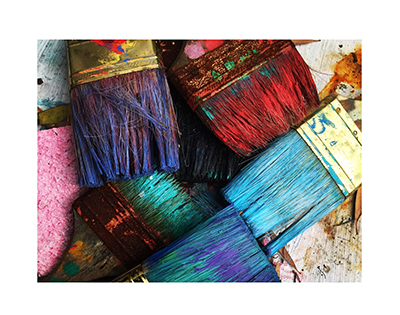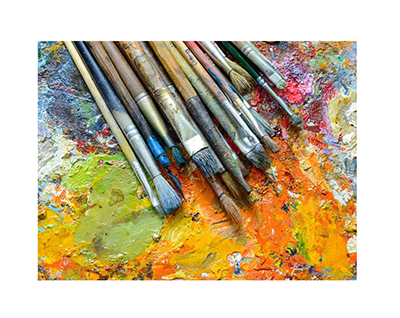Artist brushes come in many shapes and sizes, and they can also
cost you a quite a sum, especially if you invest in a good set. That's why it's
not only important to choose the right brush for you, but to know exactly how
to clean and store your art brushes once you've finished an art making session.
 Art Brushes
Art Brushes
Art brushes come with two basic types of bristles: natural and
synthetic. Natural brushes are made of animal hair, such as hog bristles,
camel, sable and mongoose, while synthetic brushes either are used to mimic
their animal counterparts or are used due to the fact that they can create
different and distinct strokes.
The type of bristles that you will choose largely depends on the
type of paint you will be using.
Sable brushes work well with acrylic painting, however, this type of
paint can be damaging to
natural-bristle brushes. Therefore, if you are an acrylic painter, maybe try
opting for synthetic over natural bristle brushes.
Then there is oil paint, which has a thicker consistency. In this
case, brushes with coarser bristles would work better. Hog bristle and stiff,
springy synthetics are better suited for this type of paint.
Finally, there is watercolor painting. In these cases, sable
brushes are the best choice due to the fact they can absorb liquid.
 In many cases, you can use both synthetic and or natural bristles,
which leads us to the next question, what is the difference between these two?
First of all, picking the right brush, depends mostly on your need.
In many cases, you can use both synthetic and or natural bristles,
which leads us to the next question, what is the difference between these two?
First of all, picking the right brush, depends mostly on your need.
Natural brushes, for example, can be used to with any type of
paint, except for acrylics which can damage the delicate hairs. If you are
using watercolors, then natural brushes work perfectly as they hold a lot of
water. On the contrary, they are often more expensive than most synthetic
brushes.
On the other hand, synthetic brushes, which are made of nylon,
polyester or a mixture of both, can be more budget-friendly and work well with
all types of paints including acrylics, oils and even watercolors.
Cleaning the brushes.
First things first, make
sure to clean your brushes while they are still wet. Do not let them dry. This
is especially true if you are using acrylic paint.
Before placing your
brush into your solvent or water, make sure that you take the time to wipe all
excess paint off the brush.
Cleaning Watercolor or
Acrylic Paint
If you are using
watercolors or acrylic paint, then you'll mostly be cleaning your brush with
water and soap. Although people do use dish or hand soap in a pinch, they can
be super harsh.
There are many cleaning products available in the market which are
suitable for removing wet oil paint, watercolors and acrylic stains as well.
Cleaning Oil Paint
With Oil Paint, water alone will not be sufficient. You will need
to use some spirit or turpentine. These solvents are harsh and could, over time, cause the bristles to break. So make sure to wash the solvent from the brushes
using soap and water before storing.
Manesha Pieris